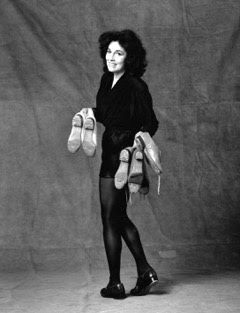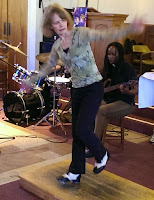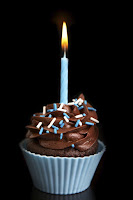 The great James "Buster" Brown once told me that what he really enjoyed seeing when going to, or performing in, vaudeville/variety shows were the comedy acts. Of course, Buster was a great tap dancer but he also had a flair for comedy. Whether through telling jokes or moving in a physically playful way, many tap dancers know how to get a laugh and engage the audience. Having done clowning and mime, I know what it's like to make the audience have a good time. In fact, when I was on The New York Committee to Celebrate National Tap Dance Day we put on a show at Town Hall in 2000 called, The Elegance of Tap & The Comedy of Tap". Buster was one of the performers and it was hosted by Bill Irwin, not a bad tapper himself! So, here are just a few examples of tap and comedy.
The great James "Buster" Brown once told me that what he really enjoyed seeing when going to, or performing in, vaudeville/variety shows were the comedy acts. Of course, Buster was a great tap dancer but he also had a flair for comedy. Whether through telling jokes or moving in a physically playful way, many tap dancers know how to get a laugh and engage the audience. Having done clowning and mime, I know what it's like to make the audience have a good time. In fact, when I was on The New York Committee to Celebrate National Tap Dance Day we put on a show at Town Hall in 2000 called, The Elegance of Tap & The Comedy of Tap". Buster was one of the performers and it was hosted by Bill Irwin, not a bad tapper himself! So, here are just a few examples of tap and comedy.
Buster loved telling jokes. One of his favorites was telling the audience he was going to do the "Elevator Dance", then he would just stand there and then say, "No steps". But those of us who knew him always waited for the joke he was best known for. Here he is with The Copasetics in a performance I recorded in 1988, telling his "Light Bulb" joke.
Another member of The Copasetics was Leslie "Bubba" Gaines. Here he is from the same performance as above doing his "Fishing" joke.
One of my best friends is someone I know from the world of clowning and physical comedy, John Towsen. He is a clown, author, educator, and all round good guy with a blog called, "All Fall Down: The Craft & Art of Physical Comedy". A few years ago, he posted about a performer named, Georges Holmes and even shared it with me, in case I knew more about him, since Holmes was a tap dancer, in addition to his other variety skills. At the time I didn't know of him, and assumed, as did John, that he was French because he briefly speaks it in the clip and it appears to be in France. I recently decided to do some internet investigation and did find something on a "Rubberneck" Holmes. Looking at the few clips of "Rubberneck" from the 1930s and comparing it with John's clip from the 1950s I saw enough similarity to believe they were the same guy. He was not French, and may have been from Boston, but probably moved to Europe like a lot of African American artists of a certain era. Click here to see the 1959 clip of Holmes posted on John's blog and look below to see a younger Holmes in action. The clip is from the 1938 "Duke Is Tops" also known as "Bronze Venus", and Holmes shows up @4:17. By the way, Lena Horne is featured in this film.
Here is a multitalented showman, whom I happened across in my YouTube surfing, named Marcel Peneux. He was born in South America but studied in the US and has evidently toured extensively in Europe. I also just discovered that a clown colleague and artist, Karen Gersch, knows of his work and even painted a large portrait of him!
One of my tap friends is Rod Ferrone, who is definitely cut from the vaudeville "cloth". He dances, sings and is known for his relationships with hats...
When I googled "Tap, Comedy", one of the names that came up was George Wallace. Now, I'm of a generation where that name conjures up an image far removed from tap dancing or comedy, to say the least (if you don't know what I'm talking about, talk to an elder). But it turns out this George Wallace had a long career as one of Australia's top comedian's. This is him in 1931. Unfortunately, the film it's from was not indicated on YouTube.
Speaking of comedians, when he was at his peak as a comedian, Steve Martin did a TV special in 1981, with Gregory Hines as one of his guests. The two do their tap version of "Fit As A Fiddle", a tune famous for its use as a dance number with Gene Kelly and Donald O'Connor in the film "Singin' In The Rain."
In 1978, I was one of the stage managers on Sesame Street and the show, Eubie, was also on Broadway. One of the Sesame cast members, Alaina Reed, was in Eubie and managed to get Gregory and his brother Maurice, who were also in Eubie, to do some bits on Sesame Street. I happened to be working that day and remember well the shooting of this and some other bits that they did.
This last clip is also from Sesame Street when Shuffleupagus learns to tap dance. I actually helped in some of the staging of this. It was challenging to work with Snuffy on some simple tap, but he got it! You'll see. Also, check out Ruth Buzzi who was a regular on the show at one point. This is from 1996.
OK, have fun and laugh when you can!










